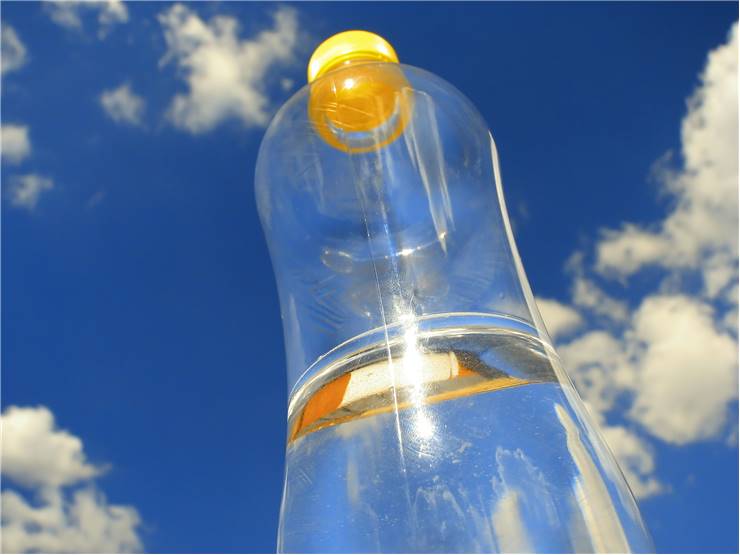History of Plastic - Origin, Inventors and Facts
Since the appearance of plastic more than 150 years ago, modern industry went through significant changes, enabling the forming of the modern way of life, worldwide economy and the creation of thousands new articles and technologies that would not be possible without the presence of this important building material. During that time plastic went through several stages, slowly building up its presence and shaping itself to become one of the most popular basic building blocks of modern human civilization.
History of plastic can be separated into two distinct parts. First one happened before the start of the 20th century, when several influential chemists and inventors produced first imperfect plastic recipes and tried to gather the interest of public and industry. Their efforts enabled the inventors of early 20th century to produce greatly improved plastic compounds which were embraced by everyone.
Plastic first appeared by the hands of English inventor Alexander parks in 1850. His work with rubber enabled him to identify basic building blocks of modern plastic, which were combined into compound he named Parkesine. Initial public showcasing of this new and innovative substance brought great fame to Parks, but his efforts to start organized industrial creation of plastic products was brought to a screeching halt only few years later. His successor Daniel Spill took over the Parkesine and tried to promote Xylonite plastic, but his venture also failed. Toward the end of 20th century two plastic compounds managed to find some success – German-developed Galalith proved to be quite popular for creation of smaller plastic objects such as buttons on clothes, and John W. Hyatt’s Celluloid found its home in film and photography.
- The word “plastic” was introduced in 1925.
- Every piece of plastic that was ever produced and was not recycled still exists.
- Modern scientists are constantly improving the recipes for biodegradable plastic (decomposes with contact of sun and water) but majority of plastic products are still produced “old fashioned way”.
- Buried plastic can last for thousands of years. Small plastic cup can last up to 80 years.
- The largest plastic waste is composed from plastic bottles.
- Recycling of plastic is rising but it’s still low in comparison to the other recyclable materials such as paper, metal and glass. United States recycles 8% of their plastic and worldwide only 2.45 billion of PET and HDPE bottles were recycled.
- Americans use over 4 million plastic bottles every hour!

Plastic History
Plastic today represent one of the most popular building blocks of our culture, work, industry and sciences, but its voyage through time was not easy and uneventful. Here you can witness history of plastic like never before.
Inventors of Plastic
Inventors of plastic enabled us to live in the world where plastic surrounds us at every step and in every hour of our day. Their contributions can still be felt across entire world, and here is the perfect place to familiarize yourself with their lives and work.
Facts about Plastic
Plastic products have managed to infuse themselves into our industry, science and way of life very quickly, leaving many people uninformed about its origins, benefits and negative effects. Find more information about plastic here.

Early years of 20th century are viewed as the undeniable start of the modern plastic industry, time when both people and industrialists embraced this chemical compound and infused it in their lives and businesses like no other material before. This all started in 1907 and 1908 when two plastic compounds appeared in public – Cellophane and Bakelite. Cellophane (created by Jacques E. Brandenberger) was light, non-reactive and easy to use plastic compound that completely changed the way industry packaged their products and protected them from natural forces (mostly water). Bakelite (created by Leo H. Baekeland) on the other hand managed to promote plastic as basic building material of tens of thousands new and old articles. It was light, usable even when it was heated (perfect for electronic casings), durable and easy to mold in factories. Its versatility quickly enabled it to be featured across our entire daily lives, from telephones and toys, to jewelry, scientific items and building materials in automobile and aerospace industries.
New plastic compounds such as Catalin, Plexiglas, Teflon and Nylon found their homes in articles that demanded different uses from Bakelite and after WWII plastic industry suddenly boomed all across the world. This happened not only because industrial processes become easier and cheaper, but also because new formulas such as ABS, Styrofoam and Lexan proved to be extremely useful in all areas of life and business.
Today, plastic continue to be one of the basic building blocks of modern civilization, expanding every year with new formulas, new abilities and new ways of use.

